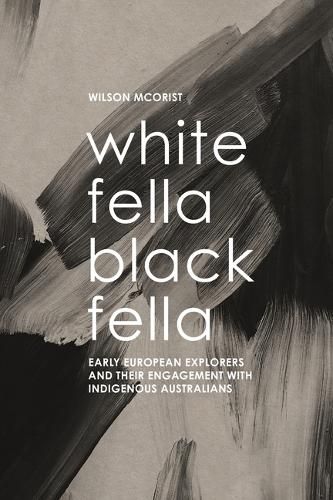Readings Newsletter
Become a Readings Member to make your shopping experience even easier.
Sign in or sign up for free!
You’re not far away from qualifying for FREE standard shipping within Australia
You’ve qualified for FREE standard shipping within Australia
The cart is loading…






The early European explorers of Australia, from the early 1600s to the mid-1800s, narrated the bewilderment, misunderstandings, affection and hostility that arose in their encounters with the Indigenous peoples. Of their reports, many are little known today. They are, however, culturally revealing and historically invaluable, and are closely examined by the author.
For example, in 1705, Dutch sailors abducted two Aborigines, but one struggles desperately and escapes. Around 1800 an Aborigine joins the navigator Matthew Flinders’ sailors and presents arms with a short staff, mimicking the sailors with their muskets. Charles Sturt, in 1828, sees it is ‘the motion of the wheels’ of a cart that excites the Aborigines the most. Thomas Mitchell, in 1836, divulges that his female guide can communicate with strange tribes, unlike his male guide, as some ‘diffidence or ceremony’ prevents Aboriginal males from speaking to strangers. To Peter Warburton it is ‘a great triumph of art’ to capture an Aboriginal woman in the western deserts, so she can take him to water. He reveals his disappointment when the woman escapes by ‘gnawing through a thick hair-rope’.
$9.00 standard shipping within Australia
FREE standard shipping within Australia for orders over $100.00
Express & International shipping calculated at checkout
The early European explorers of Australia, from the early 1600s to the mid-1800s, narrated the bewilderment, misunderstandings, affection and hostility that arose in their encounters with the Indigenous peoples. Of their reports, many are little known today. They are, however, culturally revealing and historically invaluable, and are closely examined by the author.
For example, in 1705, Dutch sailors abducted two Aborigines, but one struggles desperately and escapes. Around 1800 an Aborigine joins the navigator Matthew Flinders’ sailors and presents arms with a short staff, mimicking the sailors with their muskets. Charles Sturt, in 1828, sees it is ‘the motion of the wheels’ of a cart that excites the Aborigines the most. Thomas Mitchell, in 1836, divulges that his female guide can communicate with strange tribes, unlike his male guide, as some ‘diffidence or ceremony’ prevents Aboriginal males from speaking to strangers. To Peter Warburton it is ‘a great triumph of art’ to capture an Aboriginal woman in the western deserts, so she can take him to water. He reveals his disappointment when the woman escapes by ‘gnawing through a thick hair-rope’.